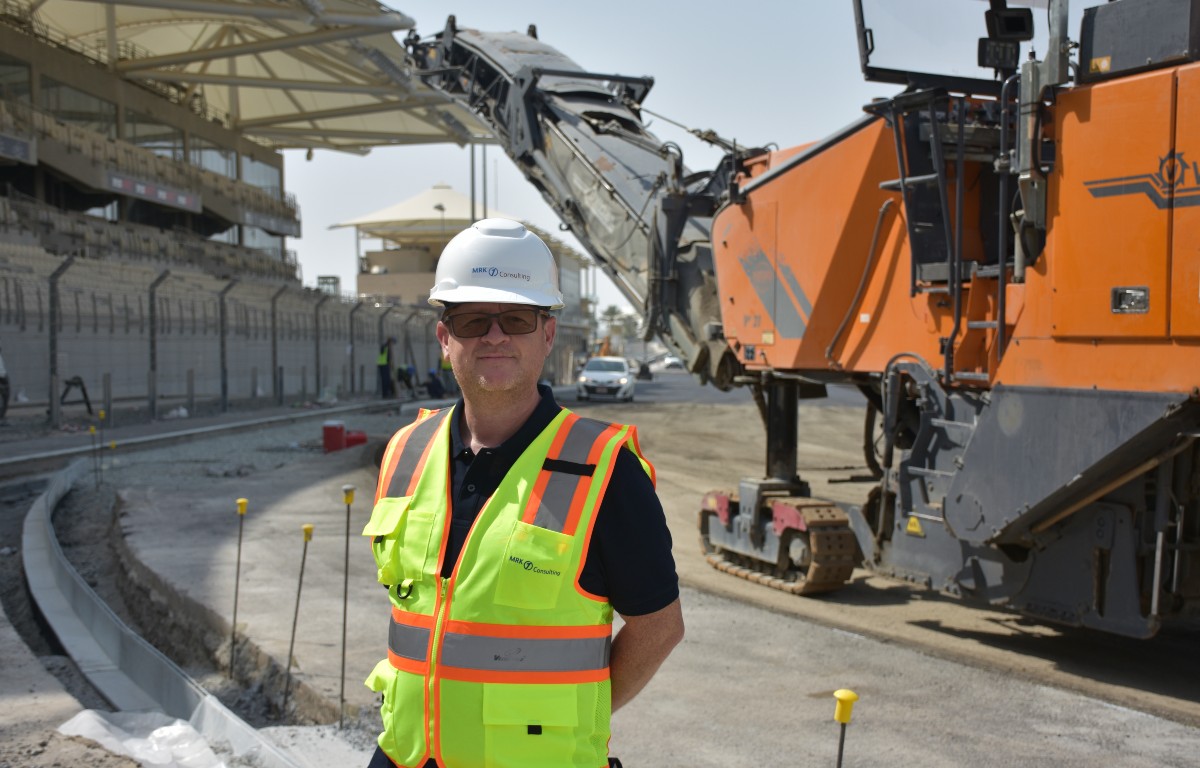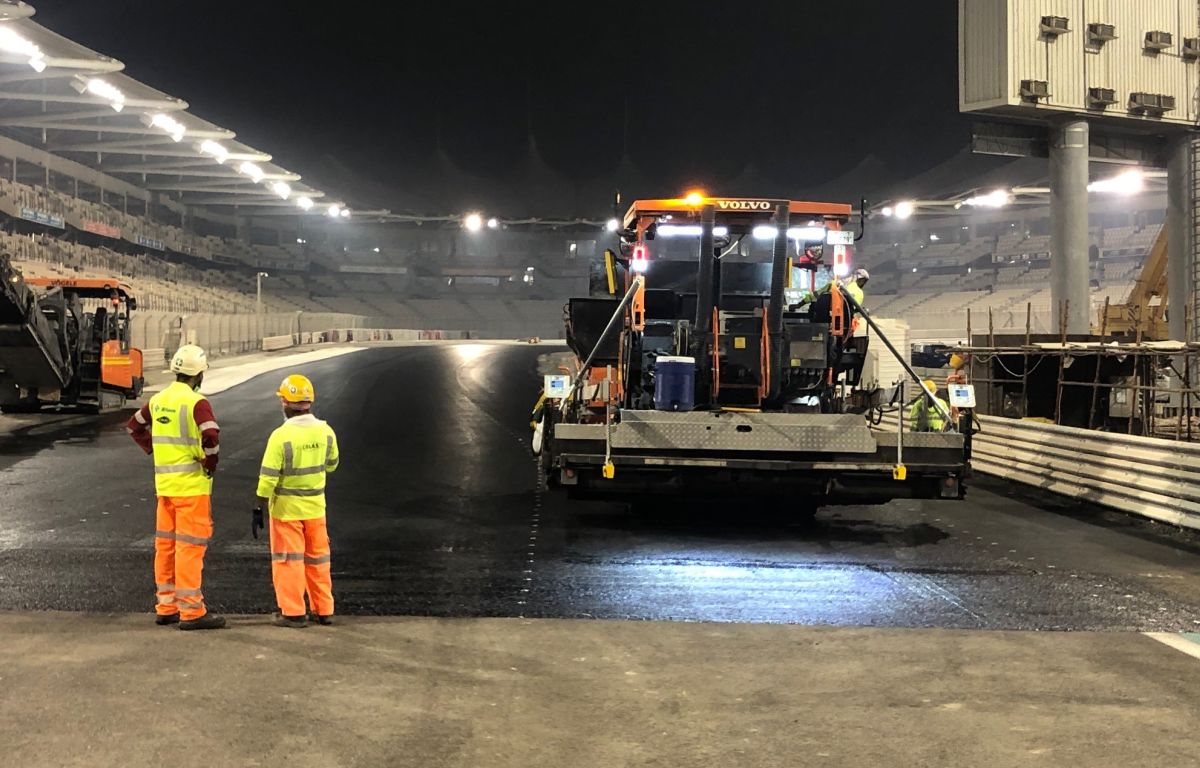Formula 1 prepares to bring a thrilling 2021 campaign to its crescendo in Abu Dhabi at a Yas Marina Circuit revamped to fit the occasion.
Following the excitement and controversy of Formula 1’s first Saudi Arabian Grand Prix, Max Verstappen and Lewis Hamilton are tied on 369.5 points at the top of the Drivers’ Championship with only one round to go.
By name, the host of this title decider is familiar, with the Abu Dhabi Grand Prix having featured on the F1 calendar since 2009, but the Yas Marina Circuit itself has been altered significantly.
Working on these all-important changes were Mrk1 Consulting, the venue developer and operator also behind Azerbaijan’s Baku City Circuit, alongside Ben Willshire’s firm Driven International which provided the detail engineering design work.
Mrk1’s managing director, Mark Hughes, played an integral role in the development of the original Yas Marina, as well as the Bahrain International Circuit among others.
And among the flurry of alterations to create Yas Marina 2.0, Hughes hailed the new Turn 9 as the jewel in the crown.

Speaking to PlanetF1 about the changes made to the venue, Hughes said: “We worked very closely with the management team at Yas Marina and Craig Wilson from Formula One [head of vehicle performance], who between them created the initial concepts of what they would like changed.
“The changes they proposed were to the original Turn 7, Turns 11 to 14, Turns 17 to 20.
“After several months of design evolution to ensure FIA compliance, practicalities of the changes and the need to retain the other day-to-day commercial activities of the venue, the resulting changes are [firstly], the F1 cars no longer use the chicane going into T5 (old T7). The chicane is still there and is still compliant with a Grade 1 licence but won’t be used.
“The cars now approach the North Stadium section faster and Turn 5 is now much wider, allowing several lines into the long back straight. The track also flairs out towards the grandstand on the exit and there are new FIA combination kerbs on the exit to help manage track limits.
“The next major change is the complete removal of Turns 11 to 14 which were just after the support pits.
“The new T9 is a real signature corner for Yas Marina Circuit. It is a wider, fast corner with 5% positive camber to give the drivers confidence to tackle it at speed. Again, there are several lines into and through the corner.
“The old T17 to 20 are the technical section into, under and beyond the hotel. These were fairly slow 90-degree corners where we have opened up the radius to make them more flowing. The old T20 (now T15) is flat out in an F1 car.”
Previous Abu Dhabi GPs have been criticised at times for a lack of overtaking opportunities – an issue that characterised the 2010 race when title contenders Fernando Alonso and Mark Webber haemorrhaged time stuck behind Vitaly Petrov, allowing Sebastian Vettel to go on and claim the title.
But Hughes assures that, based on the simulations, the new Yas Marina will allow cars to follow more closely, which should in turn mean more overtaking.
“Through the work with Craig Wilson using their simulations, we know the changes all hang together to create a track that will allow the cars to follow each other more closely,” he said.
“That was one of the key factors for both F1 and the management at Yas Marina Circuit, who wanted to create a more interesting race track for the fans both at the venue and on TV, as well as for the drivers.
“Interestingly, we went through a process where we considered removing one of the changes and it just didn’t work. It’s all about improving the experience across the whole lap, not making one corner or section better.”
A feature of Formula 1’s past which is now making its way back into modern track designs is banking, as seen at the redesigned Circuit Zandvoort, host of the Dutch Grand Prix, and more recently Saudi Arabia’s Jeddah Corniche Circuit.
And at the new Yas Marina, Turn 5 and Turn 9 now feature increased “positive camber”, but Hughes stopped short of describing it as banking since creating a corner with a gradient worthy of that description was not possible as it would have meant obscuring the view of the track.
“Banking is a slightly misleading term as it makes people think of NASCAR-type circuits or Zandvoort, for example,” said Hughes when asked about the now sloped Turn 5 and Turn 9.
“The difficult thing with banking is that however much you bank a track, the run-off area needs to continue at a similar plane. If we had done that in Abu Dhabi, the result would have been a six-metre high retaining wall obscuring views from the Marina Grandstand and the yachts.
“What we have at Yas Marina instead are two corners with more positive camber, which is enough to give drivers more confidence. These are T5 and T9 with 3% and 5% respectively.”
In terms of the track then, Hamilton and Verstappen look set to have all the tools they need to go to battle for one last and all-important time this season.
But while it is always a nervy wait for any venue to discover if the simulations truly deliver the on-track action, Yas Marina has been thrown into the deepest of deep ends.
Not since 1974 have the title contenders been level on points going into the last race, so the pressure truly is on for Yas Marina to rise to the occasion of this grand finale.
But while these are nervous times for Hughes and Willshire, there is also a great sense of excitement.
“Until Sunday I was overseeing the track operations in Jeddah, so didn’t have much opportunity to think about it,” said Hughes.
“Since arriving in Abu Dhabi though, it has been a subject Ben and I have been consumed with.
“Yes, we are nervous but we are also excited and thrilled that the track we redesigned will host the finale to one of the most iconic and closest seasons in F1 history.”
Source: Read Full Article

